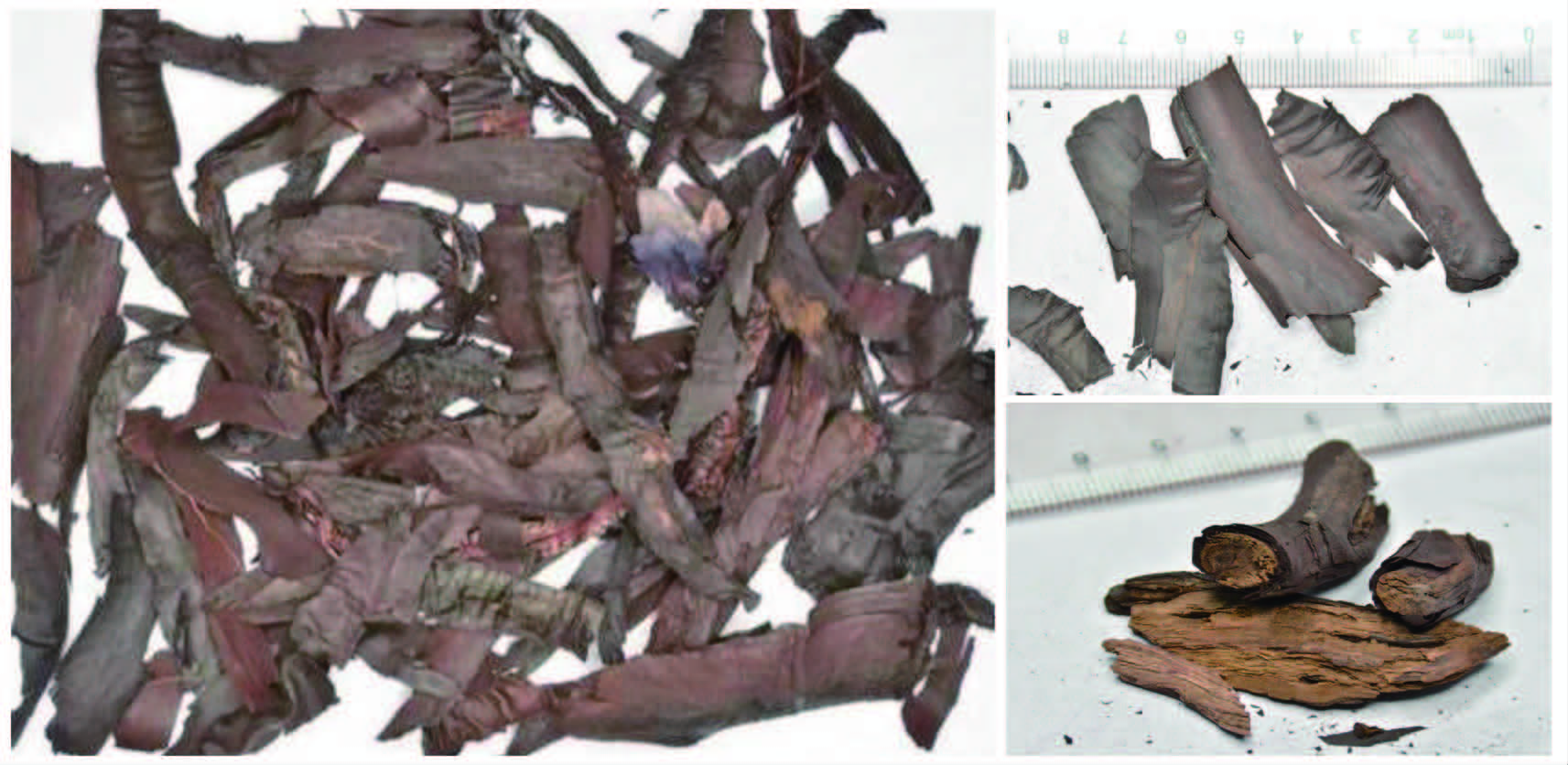
Arnebiae Radix is a common medicinal herb used in ethnic minority areas, and is also a commonly used bulk Chinese medicine. At present, the annual demand for the domestic Chinese herbal medicine market is about 1,200 tons, but the annual output of Arnebiae Radix is less than 100 tons. Arnebiae Radix functions as clear heat, cool the blood, activate blood, remove toxin, promote eruption and resolve macule, and can be used for exuberant blood heat-toxin, manifested as dark purple macule and papule, unerupted measles, sore and ulcer, eczema, scald and burn. There are 122 Chinese patent medicine prescriptions and 195 Chinese medicine formulas containing Arnebiae Radix, indicating that Arnebiae Radix is widely used and has important medicinal value. In addition to Arnebia guttata Bunge and Arnebiae Radix adopted by the Pharmacopoeia of the People’s Republic of China (ChP), other species of Arnebiae Radix are common in the market. Lithospermum erythrorhizon is used in Hebei, Liaoning, and Jiangxi, among others. In Yunnan and other places, it is common to use Onosma paniculatum and Onosma exsertum Hemsl. In Sichuan and other places, it is common to use Onosma confertum. Potentilla chinensis Ser.(Commonly known as Northern Arnebiae Radix)of the Rosaceae family is commonly used in Guangxi and Guangdong. The insufficient supply of the species adopted by ChP and the inconsistent species used in local, and the imported species (the exact species are not yet clear) in the market lead to confused application of Arnebiae Radix. Currently, Arnebiae Radix, one of the species adopted by ChP, has been artificially cultivated. But the consistency between cultivated Arnebiae Radix and wild Arnebiae Radix needs to be examined. Therefore, it is a very important and urgent task to expand the resources of Arnebiae Radix to fill the gap of market demand.
In 2015, Institute for Control of Chinese Traditional Medicine and Ethnic Medicine, National Institutes for Food and Drug Control, carried out a national sampling of Arnebiae Radix. It was concluded that the resource of Arnebiae Radix were scarce, and that of Arnebia guttata Bunge was on the verge of depletion in Inner Mongolia. Besides, a considerable proportion of Arnebiae Radix prepared slices from the market were unqualified. Therefore, the Institute for Control of Chinese Traditional Medicine and Ethnic Medicine initiated special research on Boraginaceous herbs and assisted in the cultivation of Arnebiae Radix. Now the herb has been successfully cultivated in many parts of the country and continues to expand its cultivation area, intending to solve the problem of the scarcity of resources for Arnebiae Radix. In 2022, the Institute for Control of Chinese Traditional Medicine and Ethnic Medicine performed the national drug sampling of Arnebiae Radix again, and the results showed that the qualification rate of Arnebiae Radix prepared slices increased from 43.9% in 2015 to 87.5%, a substantial increase in qualification rate.
In order to carry out in-depth research on the quality standard of Arnebiae Radix, this journal specializes in “Column on Quality Evaluation of Arnebiae Radix”. “Discussion on the quality status of Arnebiae Radix based on the national drug sampling and testing in 2015 and 2022” comprehensively analyzed the problems reflected in the two sampling tests of Arnebiae Radix. The results indicated that it was of great significance to improve the standards of the ChP of Arnebiae Radix, to establish scientific test items and to strengthen the construction of the quality control system for the supervision of Arnebiae Radix. “The ITS2 sequences’ characters study of imported Arnebiae Radix based on DNA barcoding and PCR-RFLP technologies” provided reference basis for quality control and authenticity identification of marketed Arnebiae Radix and its prepared slices. “The screening of identification primers for Arnebiae Radix based on nested PCR” could be used to efficiently amplify and identify the specific primers for the authenticity of Arnebiae Radix market samples, which provided a referable basis for the subsequent research and development of the identification methods of Arnebiae Radix.“Study on quality control of Arnebiae Radix based on ‘color discrimination grading’ ” compared the correlation between the color of Arnebiae Radix and the contents of six major purple pigment components, and evaluated the quality of Arnebiae Radix by the color of herbs. “The comparative study on the regulation effect of authentic and counterfeit Arnebiae Radix on intestinal flora in mice” compared the similarities and differences in the regulatory effects of authentic and counterfeit products of Arnebiae Radix market herbs on the intestinal flora of mice, relying on the method of macrogenomic sequencing. “Comparative study on the quality of wild and cultivated Arnebiae Radix” conducted a comparative study of the quality of wild and cultivated Arnebiae Radix by using trait comparisons and chemometrics to compare the dissimilar components of wild and cultivated Arnebiae Radix with those of cultivated products from three different regions to establish the optimal Arnebiae Radix cultivation site.
Through this research column, the journal hopes to provide new ideas and methods for Arnebiae Radix research, on the basis of which the depth and breadth of Arnebiae Radix research can be expanded, thus promoting the innovative development of Arnebiae Radix.